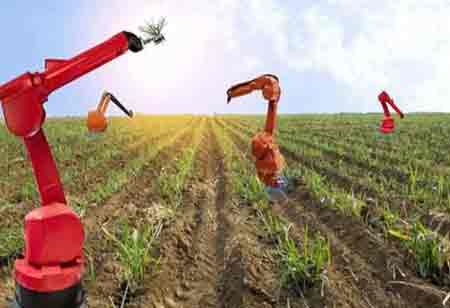Thank you for Subscribing to Agri Business Review Weekly Brief
The Future of Farming: How Automation Enhances Agricultural Practices
Automated storage and temperature control systems preserve produce, extending shelf life and reducing waste.

By
Agri Business Review | Tuesday, October 07, 2025
Stay ahead of the industry with exclusive feature stories on the top companies, expert insights and the latest news delivered straight to your inbox. Subscribe today.
Fremont, CA: Automated systems, including drones, GPS-guided tractors, and sensors, are helping farmers monitor and manage their fields with unparalleled accuracy. The technologies allow for site-specific crop management by collecting real-time data on soil health, crop conditions, and weather patterns. Autonomous machinery is another transformative element in modern agriculture. Self-driving tractors, harvesters, and planting machines equipped with advanced sensors and AI are reducing the need for manual labor while ensuring consistent and precise operations. The machines can work around the clock, increasing productivity and efficiency, particularly during critical farming seasons.
Irrigation systems have seen a shift toward automation, with smart irrigation technologies now commonplace. These systems use soil moisture sensors, weather forecasts, and crop data to optimize water distribution, significantly reducing waste. Automated drip irrigation, for instance, ensures that water is delivered directly to plant roots at the right time and in the right amount, enhancing water-use efficiency and promoting sustainable farming practices. Their ability to operate independently also addresses the ongoing challenge of labor shortages in many agricultural regions.
Post-harvest processes are equally benefiting from automation. Sorting, grading, and packaging systems equipped with machine vision and robotic arms streamline operations, ensuring quality control and reducing post-harvest losses. Livestock farming has embraced automation. Robotic milking machines, automated feeding systems, and wearable sensors for animals are transforming dairy and meat production. These technologies enhance efficiency and improve animal welfare by monitoring health indicators and ensuring proper care. Automation plays a critical role in addressing the environmental impact of agriculture.
Automated systems reduce the ecological footprint of farming by minimizing water, fertilizers, and pesticides. Technologies like no-till farming equipment and precision planting machines promote soil health and biodiversity, fostering sustainable agricultural practices. Vertical farming and controlled-environment agriculture are other areas where automation drives significant change. In these systems, crops are grown indoors under controlled conditions using automated lighting, irrigation, and nutrient delivery systems. The method reduces land and water requirements and enables year-round production, making it a viable solution for urban areas and regions with harsh climates.
Integrating artificial intelligence (AI) and machine learning further amplifies the potential of automation in agriculture. Combined with robotics, AI enables the development of fully automated farms, where tasks such as planting, weeding, and harvesting are performed without human intervention. Despite its transformative potential, automation in agriculture does present challenges. High initial investment costs, the need for technical expertise, and concerns about displacing traditional farming jobs are significant barriers. Automation profoundly transforms agriculture, making it more efficient, sustainable, and resilient.





